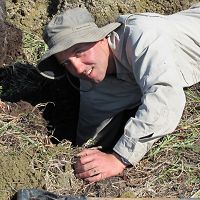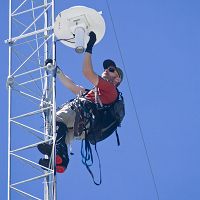Jepsen et al., 2015
Hydrogeologic Influence on Changes in Snowmelt Runoff with Climate Warming: Numerical Experiments on a Mid-Elevation Catchment in the Sierra Nevada, USA.
Jepsen, S., Harmon T., Meadows, M., Hunsaker, C. (2015)
H52C Modeling the Critical Zone: Integrating Processes and Data across Disciplines and Scales I, presented at 2015 Fall Meeting, AGU, San Francisco, CA, 14-18 Dec.
-
Sierra, COLLABORATOR
-
Sierra, STAFF
-
Sierra, INVESTIGATOR
Abstract
The role of hydrogeology in mediating long-term changes in mountain stream runoff, resulting from reduced snowfall in a potentially warmer climate, is not currently well understood. We explore this role by comparing simulated changes in stream runoff from a small (1-km2), mid-elevation catchment, located in the Southern Sierra Critical Zone Observatory (Providence Creek), for different plausible combinations of reduced snowfall and subsurface hydrologic properties. Simulations are performed using a numerical watershed model, the Penn State Integrated Hydrologic Model (PIHM), forced by data from a nearby meteorological station and calibrated to a stream gauge and eddy covariance tower. For a reduction in snowfall ranging from 47% to 89%, plausible for 2 – 6°C of warming, simulated changes in annual runoff depend as strongly on subsurface hydrologic properties as they do on air temperature increases alone, as indicated by coefficients of variation with respect to hydrologic properties ranging from 1 to 3 in magnitude. Substrates with greater storage capacity can support elevated summertime evapotranspiration by storing rain and snowmelt delivered earlier during winter and early spring, incurring greater losses from runoff. These findings indicate that the hydrologic response of mountain catchments to potential reductions in snowfall may exhibit substantial spatial variability associated with elevational differences in soil thickness and bedrock weathering, a relationship not typically accounted for in approaches relying on space-for-time substitution. An additional implication is that model simulations of annual runoff for scenarios involving snowfall-to-rainfall transitions may exhibit large uncertainty where subsurface hydrologic properties are not well constrained.
Citation
Jepsen, S., Harmon T., Meadows, M., Hunsaker, C. (2015): Hydrogeologic Influence on Changes in Snowmelt Runoff with Climate Warming: Numerical Experiments on a Mid-Elevation Catchment in the Sierra Nevada, USA. H52C Modeling the Critical Zone: Integrating Processes and Data across Disciplines and Scales I, presented at 2015 Fall Meeting, AGU, San Francisco, CA, 14-18 Dec..
Explore Further



